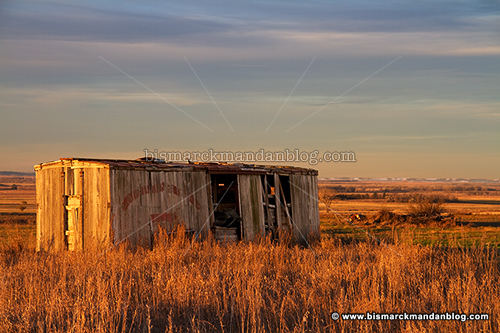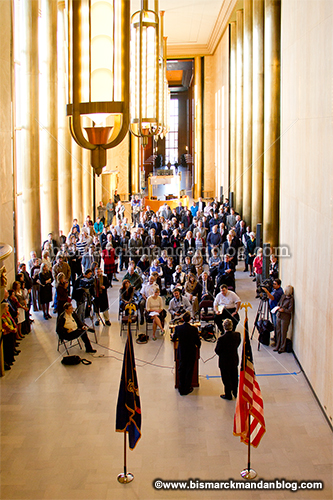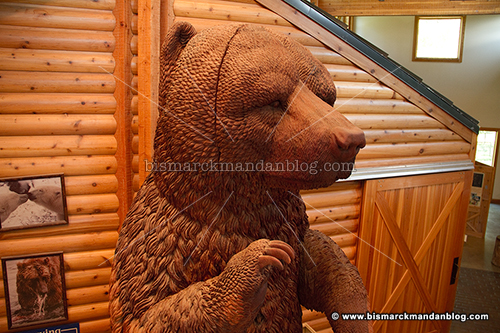
Second calling






I see the newspapers are all using stock photos (or none at all) for this story. I sent one to Rob at the Say Anything Blog along with the news of Wrigley’s selection just before the announcement was officially made. I guess that chalks one up for us crazy bloggers! Not that we’re keeping score…

If not, you may be wondering why I think so. Simple: this is probably the single most frequently used setting for portrait photography in all of Bismarck-Mandan! Sit out on the lawn some Saturday and have a picnic, and you’ll likely see numerous wedding parties come and go to have their photos taken on the steps in front of these doors. You may also see family or senior portraits taken directly in front of them. They’re rather noteworthy, and as such make a great photo background.
I have several friends who are portrait photographers, and they get a lot of demand for this location. There’s nothing wrong with that; it’s a great setting for your special photos! I just find it noteworthy and mildly amusing to watch the groups come and go as they take their turn in front of a popular local landmark.

I usually enter the library by the circulation desk downstairs, but from now on, I’m going to make it a point to enter through these big, well-known doors!










Mr. Berg didn’t take to the microphone. He didn’t use this as a campaign stop or rally. He didn’t attempt to make this event about him or his campaign. In fact, his name didn’t even appear on the flier. He simply came to the event with some of his campaign helpers and a little table, and he talked to people and was available to listen. I got to meet him and let him know I’m doing my part with those silly little YouTube videos and stuff.

Keep up the enthusiasm, my fellow North Dakotans! Let’s set things right in November!


This PAR system is also part of the larger Stanley Mickelson Safeguard Complex, which included the now abandoned Nekoma facility I posted about earlier. It had its missiles removed long ago, but this giant array still watches the northern skies. I could tell you more about this site, but probably not without ripping off David Novak’s site, www.srmsc.org. He’s got all kinds of links and photos of these facilities and how they served. Please visit this site!
I haven’t exhausted the Cold War Mancation photo series yet…stay tuned.





So what does this tower do now? It still sends VLF frequencies, but it’s used to guide submarines now at I think 150kHz. Some of the other former Omega towers were destroyed when we started switching to GPS, this one was fortunate enough to survive and serve our nation’s submarine fleet.
In a way, it’s sad that this facility has been retasked. The Omega Inn in LaMoure? Renamed. Omega Cafe? Couldn’t find it. There is an Omega Cinema in the mall, however, and a listing for an “Omega room” on the mall directory board. Since the term “Omega” no longer applies, I suppose that’s to be expected.
Here’s some background information about NCTAMS. (Link)
I’ve also added this place to my Google Maps, too. Click here for an aerial view. (This has been fixed.)
Never fear, there’s more Cold War Mancation™ coming soon!





This base was built in the 1970s, operated for a matter of weeks, and was then shut down. The town was all set for the boom of having a military base next door, and then suddenly it all evaporated on them. Here’s a must-read article about the impact of this base’s construction and subsequent closure on the little town of Nekoma.
The Library of Congress has a small collection of photos from the site’s construction available online. A really nice aerial photo of the facility is available on Wikipedia and I think may come from the LoC collection.
Here’s a link to a Google Map I’m working on with various photo sites marked for your enjoyment. This link will allow you to view the site from above via satellite. This gives a good idea of what the missile fields look like.
Many more mundane buildings still inhabit this facility, although the base housing has been moved away. Various shops, administrative buildings, the security station, the chapel, and other such buildings are still maintained on site in case the Army chooses to return.
I wish I’d taken photos of some of the other buildings in the area, including the chapel with the Christmas decorations still hanging in the window. If I find myself in the area again, I’ll be more thorough.
(UPDATE) I came across this website today, srmsc.org. It’s got a ton of information about the entire Mickelsen Complex and its function. Check it out!











This site is amazing. You can get more information and listen to some relevant podcasts by clicking here for the State Historical Society’s page. If you visit, tell them you heard about the site here. I got to hang out for a while and chat with some of the staff and the site director (a former missileer and narrator of one of the SHS podcasts). It was a real treat. There’s plenty more I haven’t even described here, so you’ve got plenty of surprises awaiting.
Update: Announced yesterday was the news that this site has won an award: click here for more information.

A friend of mine once told me that there are three things that concrete does: it gets hard, it turns gray, and it cracks. Well, wood carvings do a couple of those things. As the wood ages it often develops cracks in inconvenient places. This carving of Clyde appears to have done so. I don’t think it detracts from the statue or its tribute at all, but it did make an opportunity for a “splitting headache” joke!
This statue really is quite large, as was the real Clyde. To get this shot I had my camera on a monopod, with the foot wedged into my collarbone, and the camera fired by remote as I held it aloft. Oh yeah…I was standing on a stump at the time, too. Here’s to you, Clyde!
This isn’t the only remarkable tribute to Clyde, although it’s far more permanent than my other favorite. Right after Clyde’s passing, someone made an enormous sand sculpture of Clyde lying on his back on the sandbar beneath the original Liberty Memorial Bridge. It was quite plainly visible while driving over the bridge until nature took its course and slowly whittled away at it. I wish I had been a photographer back then! I’m sure pictures of it are floating around somewhere…just not in my collection.

This brought to mind the fact that this bridge is fantastic in every way EXCEPT for the absence of a sidewalk on the north side! Thanks to this omission, it’s darn near impossible to get a clean sunset photo during the summer, since one must look northward to do so. I say “almost” because I still have my ways…
